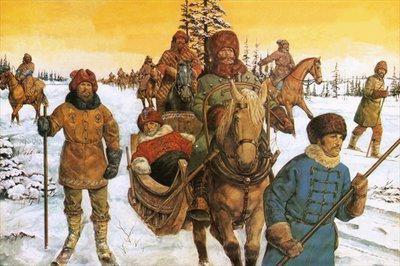The peasant uprising of 1547 clearly demonstrated the need to consolidate the ruling class to stabilize the situation in the country. With the advent of new people in the government of Ivan the Terrible, a circle appeared, which is usually called the Chosen Rada. Its representatives: A.F. Adashev, Priest Sylvester and Metropolitan Makarii - enjoyed the greatest influence on Ivan the Terrible, which allowed them to initiate changes in the public administration system.
Historical context
The aggravation of the social struggle between the upper and lower classes is always expressed in the growth and increase in the number of uprisings and strikes. You can suppress them only if you completely or at least partially eliminate what worries the masses. So, in the XVI century, a lip reform was carried out, which transferred some functions of governors and volosts to representatives of the new post - the elders. It was decided to elect them from boyar children, and to appoint wealthy peasants to help, which deprived the masses of the main "sponsors" in the fight against social injustice. Lip reform allowed the ruling classes to use the newly created organs to suppress peasant and servile demonstrations.
Innovations
Ivan the Terrible came to the throne at the age of three years, so the first years of his reign were associated with the struggle of various boyar groups for influence on the young grand duke. In 1538, lip reform began to take place. She was directed against the governors who interfered with Glinsky. On the territory of counties, districts were created, headed by elders. Together with the Sotsky and Tensky elected from the best peasants, they fought against theft and robbery, identifying "dashing people". The lip reform granted authority to the elders to conduct an investigation and execute the identified criminals, but in reality it was just to punish the undesirable. After the uprising in Moscow against the Glinsky, a new government begins to take shape at the court. In 1549, the tsar appeared in front of metropolitan nobles and bishops with the denunciation of abuses of nobles and governors, with which Ivan the Terrible's lip reform struggled. This meeting was the first meeting of the Zemsky Sobor and was the beginning of new institutional changes.

Transformation Progress
Already in the 1540s, lip reform was implemented in most regions of Russia, and the first letters dated back to 1539. At the same time, a Robbery order was established in Moscow, which was responsible for the supervision of the activities of the new bodies. In the second half of the sixteenth Russia became a class-representative monarchy, which gives a further impetus to the development of the labial organs and makes them a kind of early analogues of modern local self-government. Thus, Ivan the Terrible’s lab reform set a precedent for further increasing the powers of the county governments, which helped reorganize the peasantry. After a hundred years, it is precisely the elected elders who will become the closest associates of the governor.

Lip and Zemstvo reform is a logical continuation of the changes that have been emerging in society. The elders elected from local noblemen (often old servants) knew much more the customs and interests of their district, therefore they could more effectively manage the lands entrusted to them.